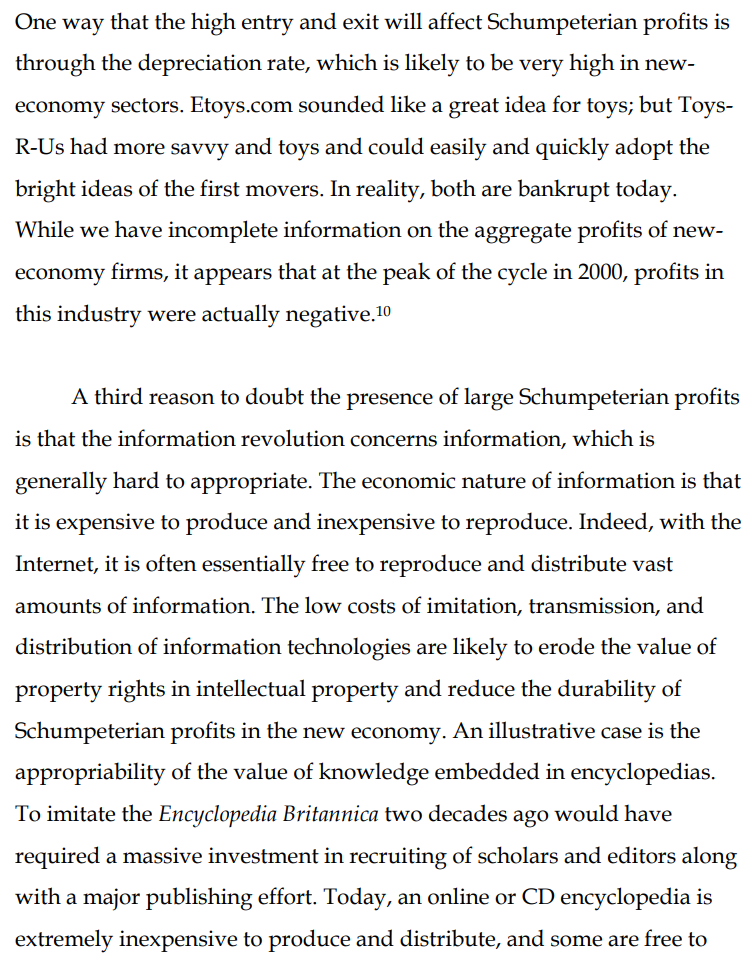- I sometimes hear prospective employees feel like they are "overqualified" for EA positions by trying to compare relevant metrics. E.g. "you don't need a product manager if you have less than 5,000 page views per day." I think this is misunderstanding a key difference between altruistic and profit-motivated organizations.
- Many companies only capture a small fraction of the value they produce. Nordhaus 2004 estimates that companies capture about 2% of the value they create through innovation.
- This means that companies underinvest their products (relative to the social optimum), because they can't capture the value from improved products.
- Therefore, altruistic organizations should invest substantially more into their products than comparable for-profit organizations do.
- As a concrete example: Reddit has approximately one employee per 600,000 users, whereas this Forum has approximately one employee per 13,000.[1] Interestingly, this is almost exactly the 50x multiple Nordhaus would predict.[2]
- I would further argue that it's multiple orders of magnitude more valuable to attract a user to the EA Forum than to Reddit, so the 50x multiple should be even higher, though obviously I have a bias.
- I think this adjustment for externalities is still not actually the right way to make career decisions – you should think more about the impact you have, not how some arbitrary metric compares – but if you are going to consider arbitrary metrics, I think you should consider adjusting by a large amount.
Some of these ideas are also referenced in the tech entrepreneurship 80 K article.
CEA Online, the team supporting this forum, has current openings for for UI, UX, or Graphic Designer, Product Manager, Full-Stack Engineer.
- ^
Reddit data taken from https://backlinko.com/reddit-users. There are four people who work full-time on the Forum (JP, Sarah, Clifford, Lizka); without evidence I will claim that the portion of operational staff who support them add up to a 5th FTE. Forum MAU count from Google analytics, trailing 28 days ending May 17, 2022.
- ^
Of course, this is oversimplified. For example, presumably there are diminishing returns to labor, so naïvely multiplying employees by 50 is too simplistic.





Interesting idea, but (based on about 20 seconds thought) I'm not convinced it holds in equilibrium. If for-profit firms under-invest by 50x, and charities adapt to this by ramping up their investment massively, aren't they then taking resources (e.g. labour) away from the for-profit sector and thus making for-profit under-investment even worse? (Assuming the total consumption/investment tradeoff is unchanged).
Yeah, I think you also have to assume that charities want something other than to create surplus value in the way for-profit companies do. Suppose not-- say there are altruistic and for-profit firms, and altruistic and selfish labor, and the altruists want to maximize total surplus created. Not an economist, but I think the equilibrium looks like:
- altruistic firms are better buyers of selfish labor; therefore the price of labor goes up
- altruistic employees work for the most altruistically efficient firms, whether they're altruistic or for-profit. For-profit
... (read more)